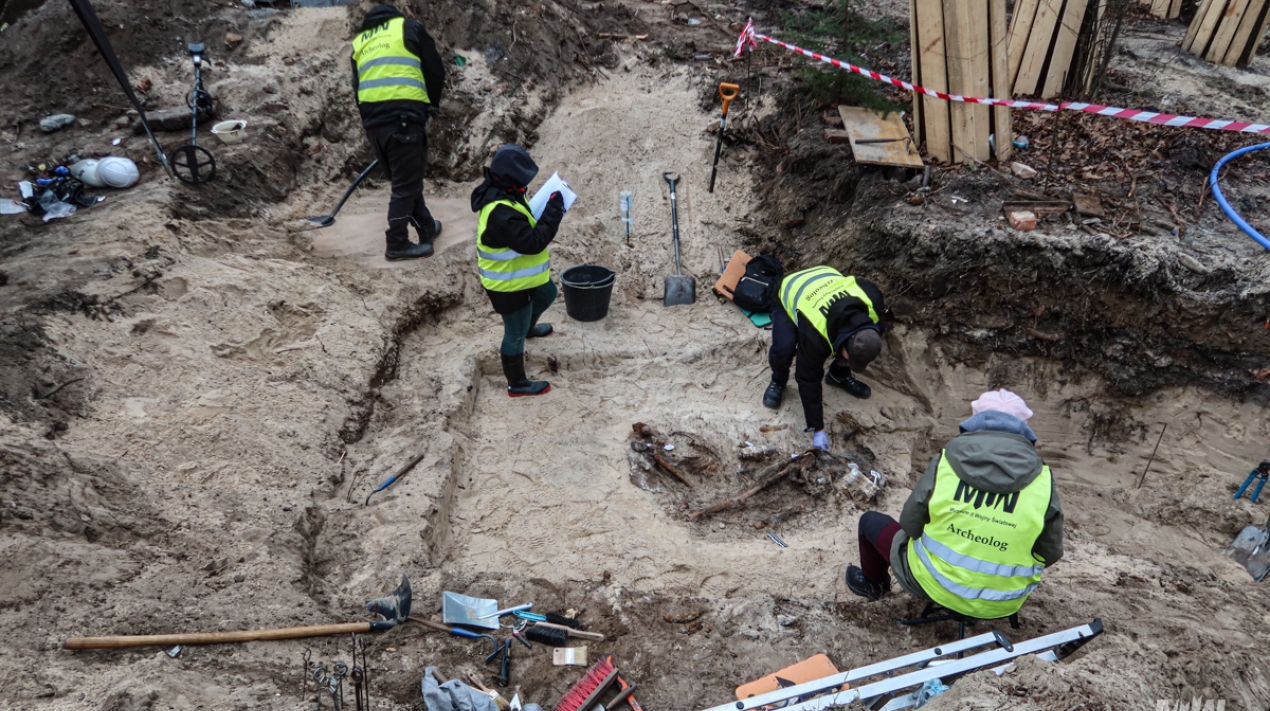MIIWW archaeologists discovered remains of German soldiers at Westerplatte
Knowledge of the heroic Polish defenders of Westerplatte in September 1939 is widespread. More and more people are also aware that the remains of nine of them were discovered by the archaeologists from the Museum of the Second World War in Gdansk during the 2019 excavations at the peninsula. By contrast, less is known about the history of the 1945 battles at Westerplatte, when the Germans defended themselves against the invading Red Army. Through the work carried out by the museum researchers, the skeletons of German soldiers are also being discovered.
During the ongoing archaeological research and supervision at Westerplatte since 2016, as a result of accidental findings, the remains of at least six German soldiers killed in the spring of 1945 have so far been uncovered, documented and exhumed.
The first remains of the Germans were encountered in 2021 during research preceding the construction of the Polish Army Soldiers’ Cemetery in Westerplatte. At that time, a battle position with skeletons of two German soldiers was found. During archaeological supervision of the earthworks for modernisation and adaptation of the power station building for exhibition purposes, which began in October 2022, further remains were uncovered.
In December 2022, single human bones were revealed during the excavation of an earth bank. Further archaeological research resulted in uncovering the remains of at least two people at these sites. In mid-January 2023, two skeletons were uncovered during the construction of the water mains. In each case, typical elements of German weaponry and equipment were found next to the remains, including: helmets, a bayonet from a Mauser rifle, a canteen, a mess-tin, essentials, belt buckles, magazines for a German 2 cm Flak gun, shells and Mauser cartridges, as well as German identity marks. Some of these items are characteristic for the end of the World War II period. In addition, in the case of the remains uncovered during the supervision of the power station upgrade, shrapnel from artillery shells or bombs were found near the skeletons, the explosions of which may have been responsible for the soldiers’ deaths.
All the work associated with human remains (uncovered during the archaeological research and the supervision) is carried out with the assistance of an anthropologist who analyses the skeletons on a regular basis. This makes it possible not only to determine age and sex of the human remains, but also to identify injuries visible on the bones.
Exhumations are carried out in close collaboration with the prosecutor from the Institute of National Remembrance in Gdansk who takes decisions on further proceedings with the remains handled by the archaeologists.















